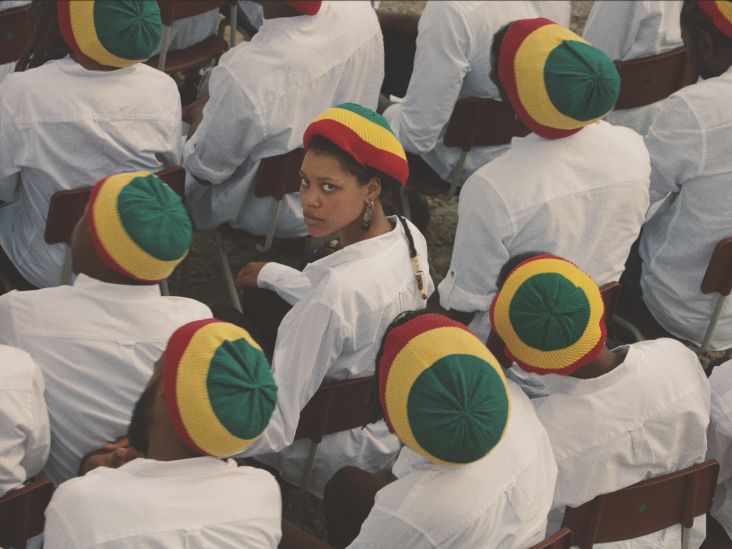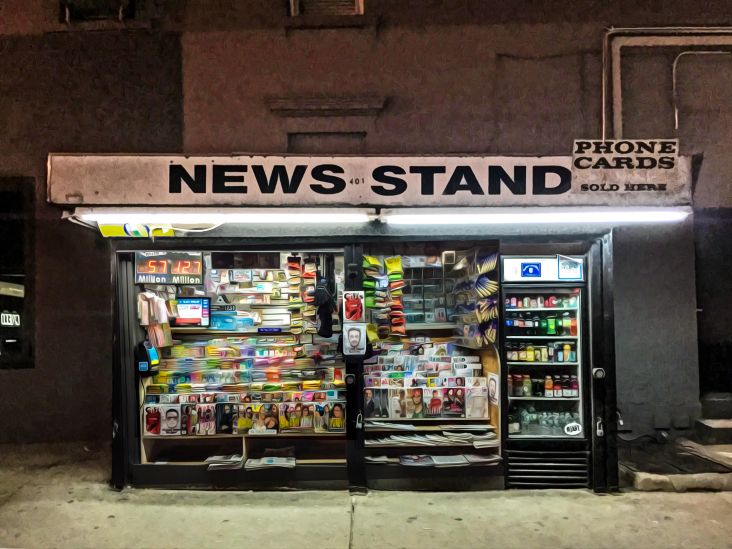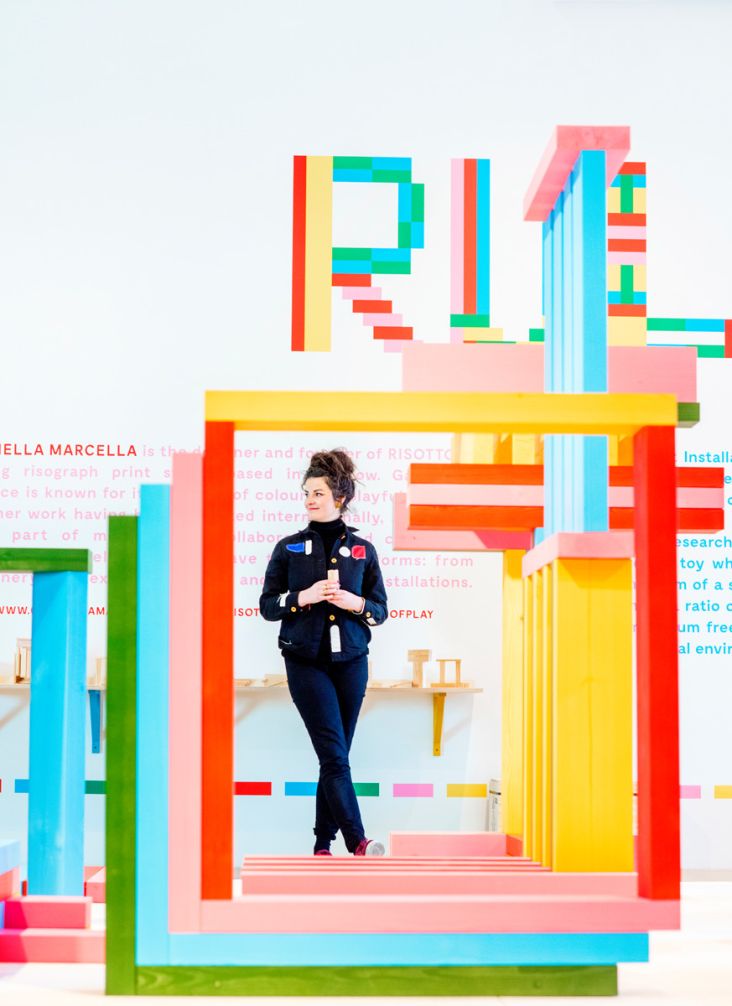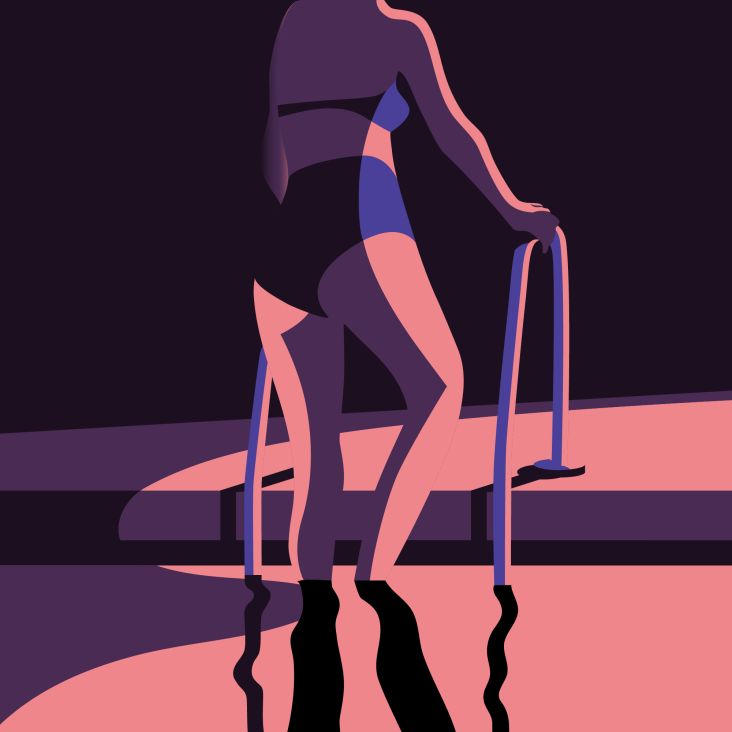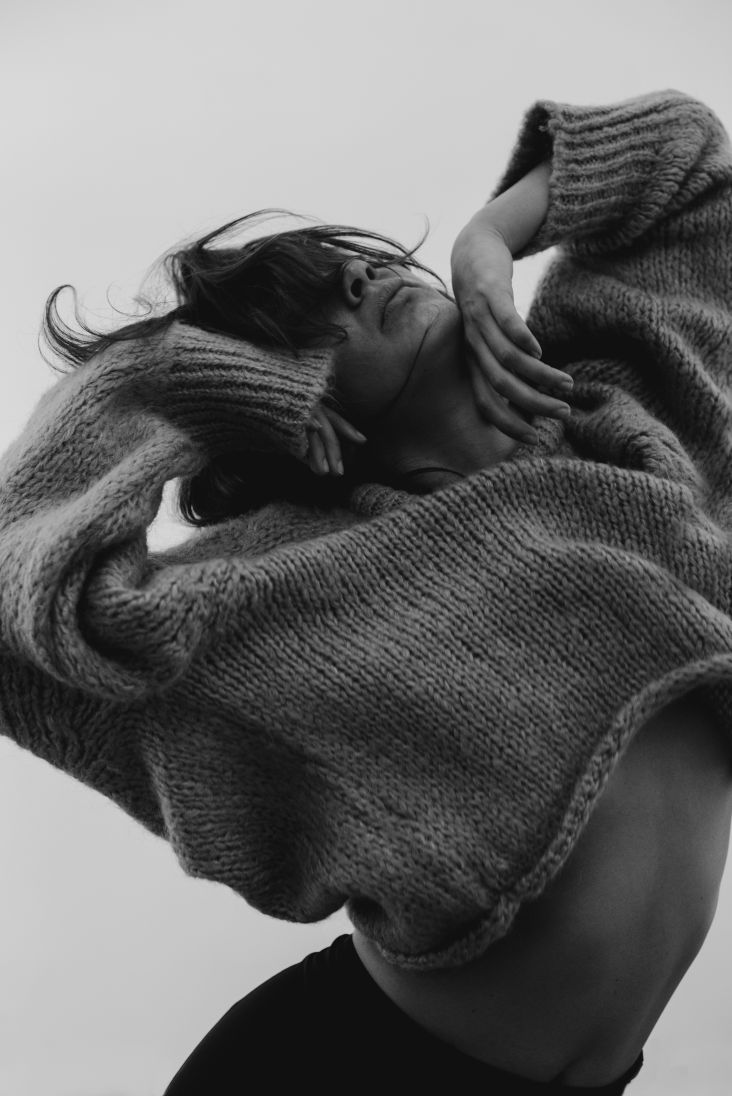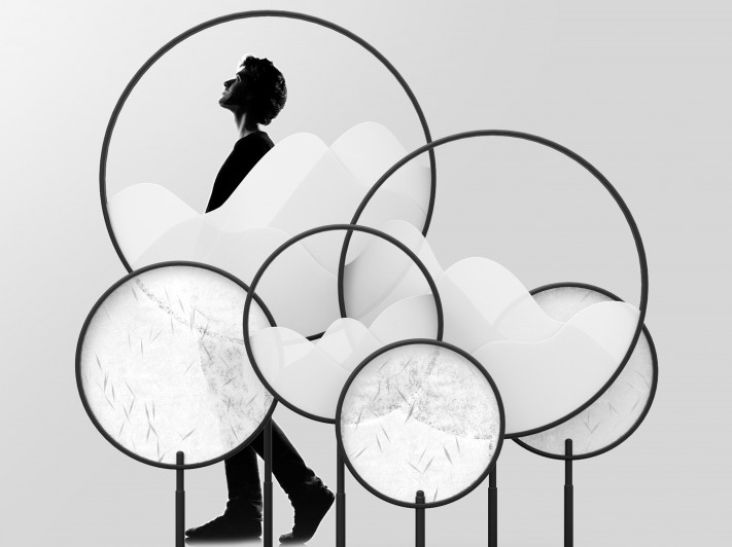Remarkable new exhibition celebrates Geta Brătescu and The Power of the Line
"When I draw, I tell a story about forms. No matter what the ‘object’ of my attention might be, the drawing narrates spatial postures, it records the track of the movements in space made by volumes or lines, linear objects.
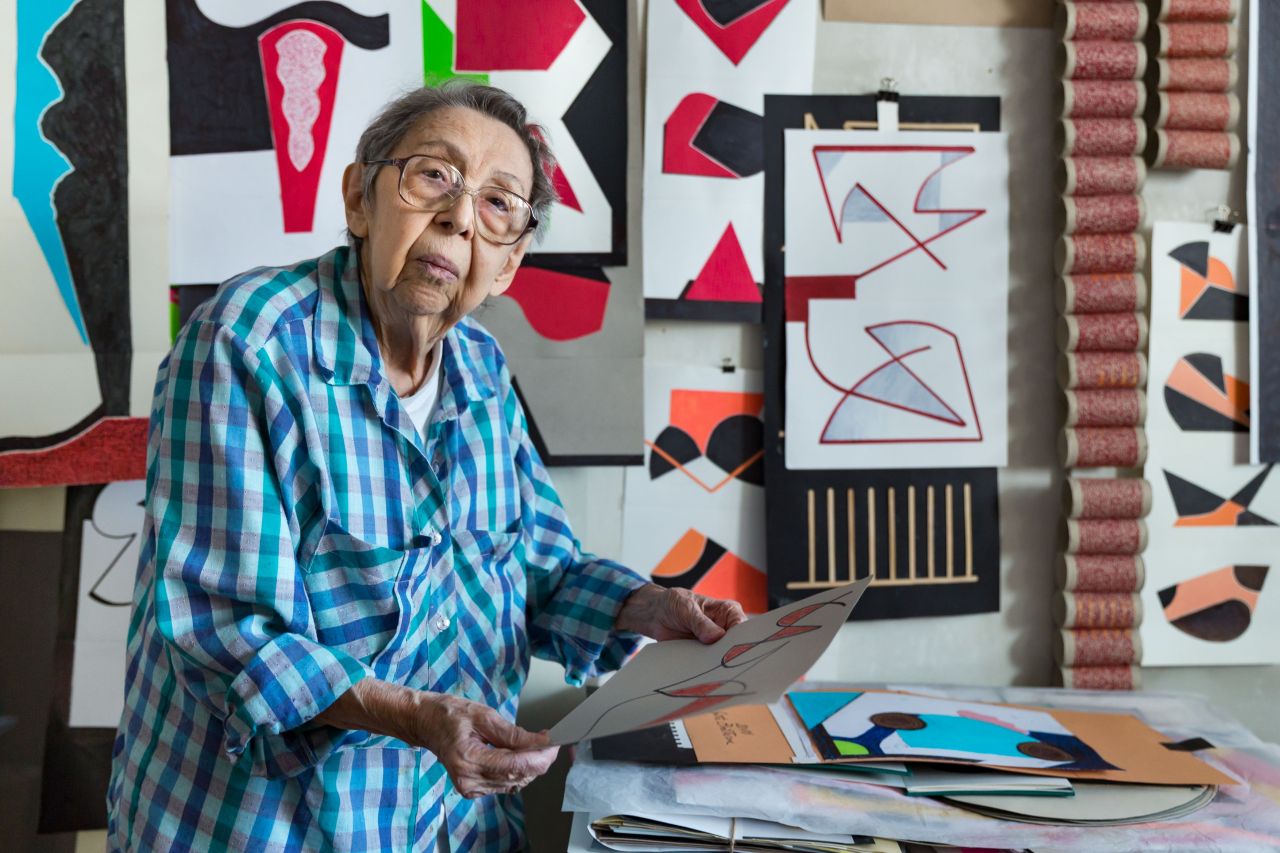
© Geta Brătescu Courtesy the artist, Ivan Gallery, Bucharest and Hauser & Wirth
"The spider’s thread borne away on the wind is a flying line. Drawing owes a huge amount to the energy with which the hand traces lines and the character of this energy are determined by the character, the mood, the culture, the vision of the artist.
"In fact, it is a mysterious phenomenon. To trace a line, a simple line, with the feeling and awareness that you are producing expression; that line is necessary to you beyond reason. To me, drawing is not simply a profession; it is the release of an intrinsic, structural energy, a joy." – These the words of Geta Brătescu, an extract from her diary in 2008, explaining the thinking behind her process.
You can learn more of this in a new exhibition at London's Hauser & Wirth this month when Geta Brătescu. The Power of the Line opens on 27 February. The show features an important body of works from the past decade, during which time Brătescu focused predominantly on working with the line as a structuring principle. The exhibition was conceived over the last year in conjunction with the artist and in close collaboration with Marian Ivan and Diana Ursan of Ivan Gallery. For the duration of the event, two film works will be screened in the centre of the gallery space giving insights into the immersive creative process of this remarkable artist.
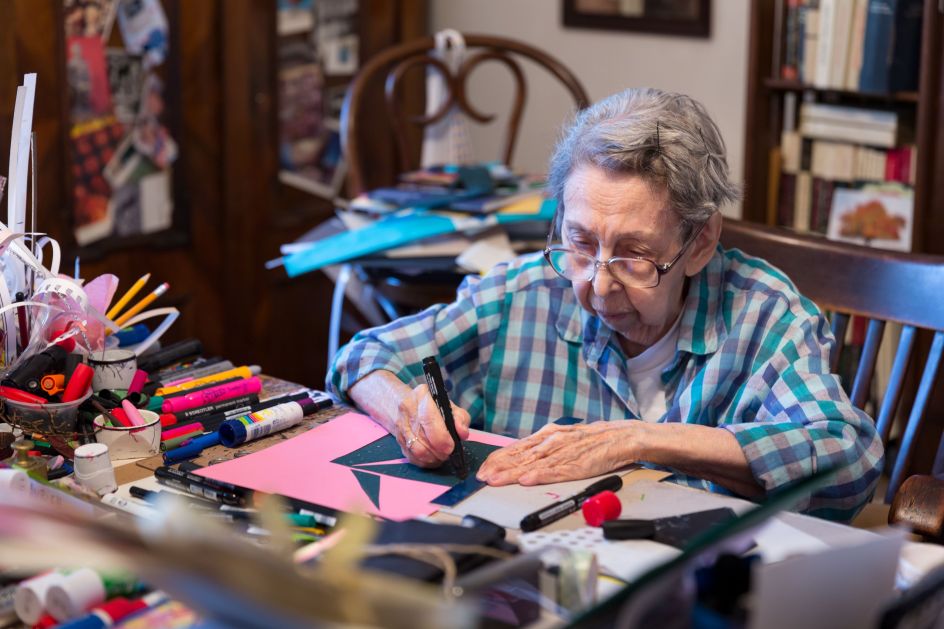
© Geta Brătescu Courtesy the artist, Ivan Gallery, Bucharest and Hauser & Wirth
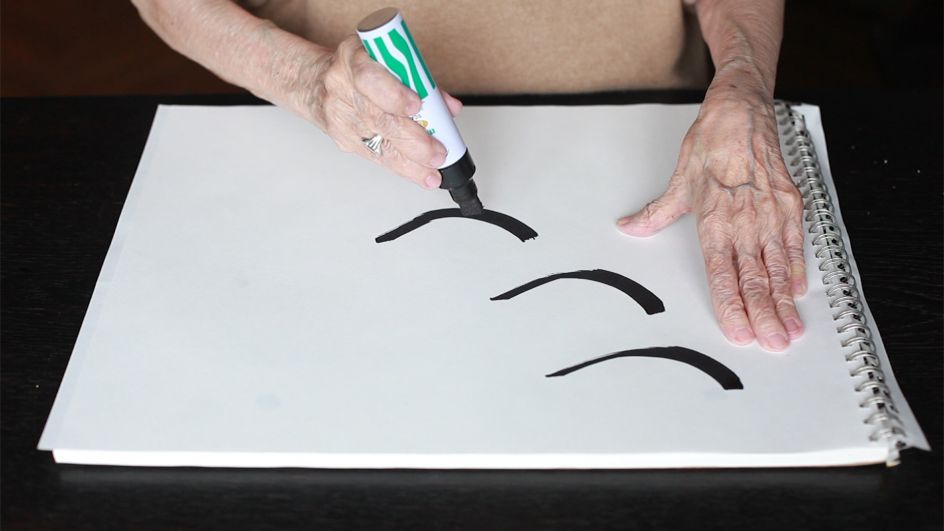
© Geta Brătescu Courtesy the artist, Ivan Gallery, Bucharest and Hauser & Wirth
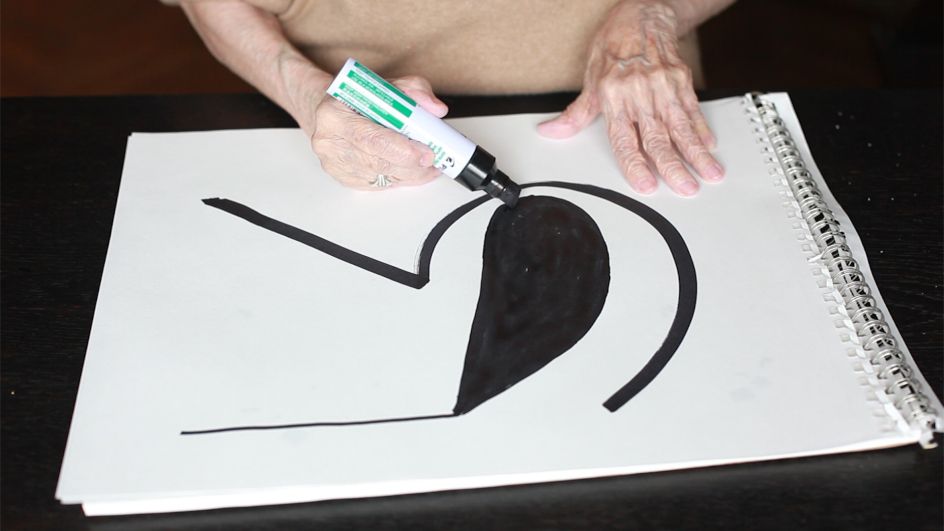
© Geta Brătescu Courtesy the artist, Ivan Gallery, Bucharest and Hauser & Wirth
Brătescu originally studied at the Academy of Fine Arts, Bucharest, in the late 1940s but was expelled due to the Communist party’s objection to her parents’ middle-class background. Over the course of a seven-decade career, she went on to develop a deeply personal practice and was one of the first representatives of conceptualist approaches in Romania.
Brătescu’s oeuvre comprises drawing, collage, textiles, photography, experimental film and performance which mines themes of identity, gender, and dematerialisation. Her more recent international recognition, including her Venice Biennale presentation in 2017, provided a basis for the re-evaluation of her experimental work within the framework of conceptual practices.
The carefully selected body of works in the exhibition render the different means in which Brătescu engaged the primordial unit of the line – in curved, hard-edged, contained or spread compositions. For Brătescu, the line is manifest in the movement of the artist’s hand in space as it handles the pencil, the marker or the scissors, creating a flow of shapes, forms and sometimes even silhouettes.
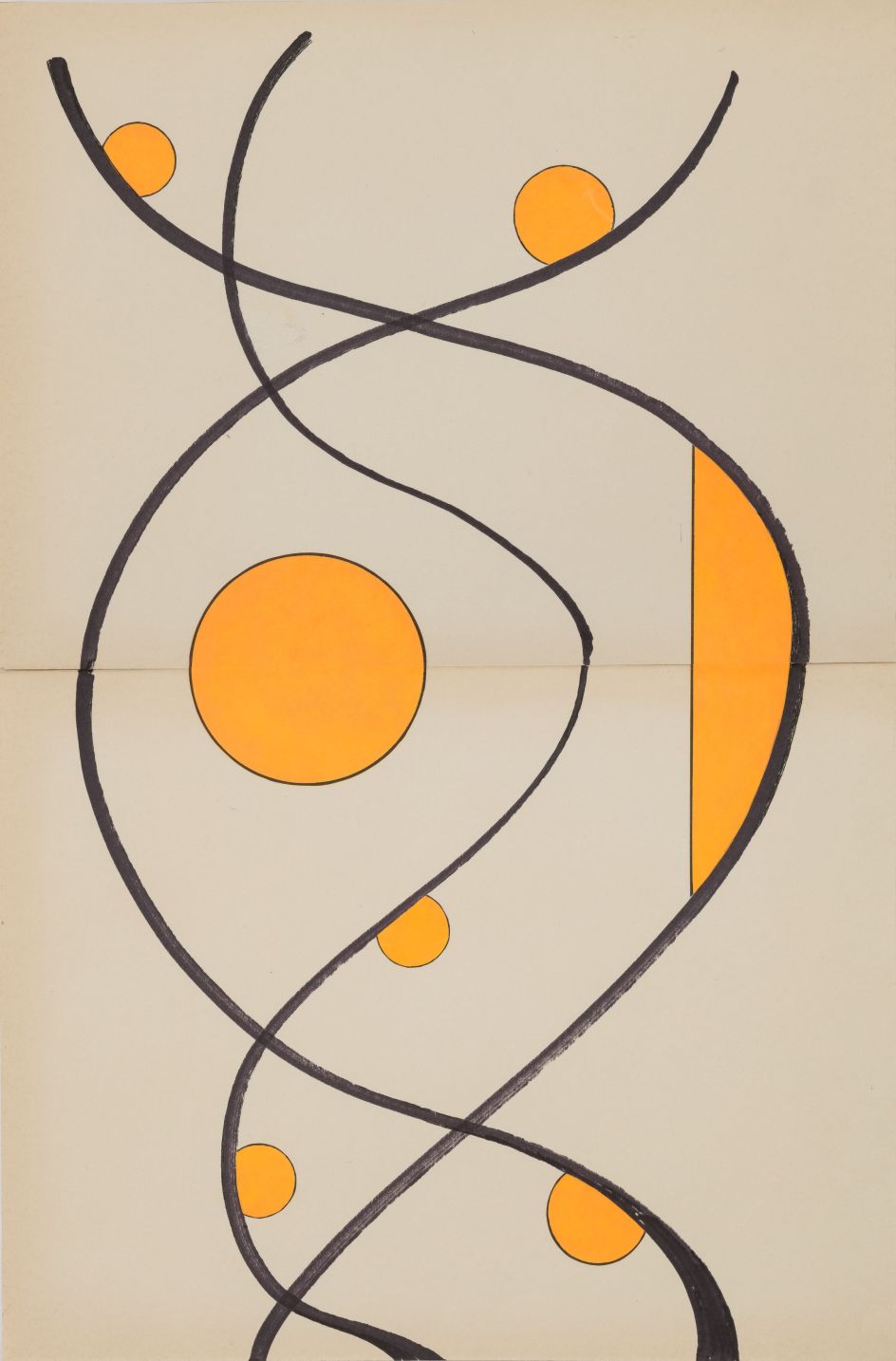
© Geta Brătescu Courtesy the artist, Ivan Gallery, Bucharest and Hauser & Wirth
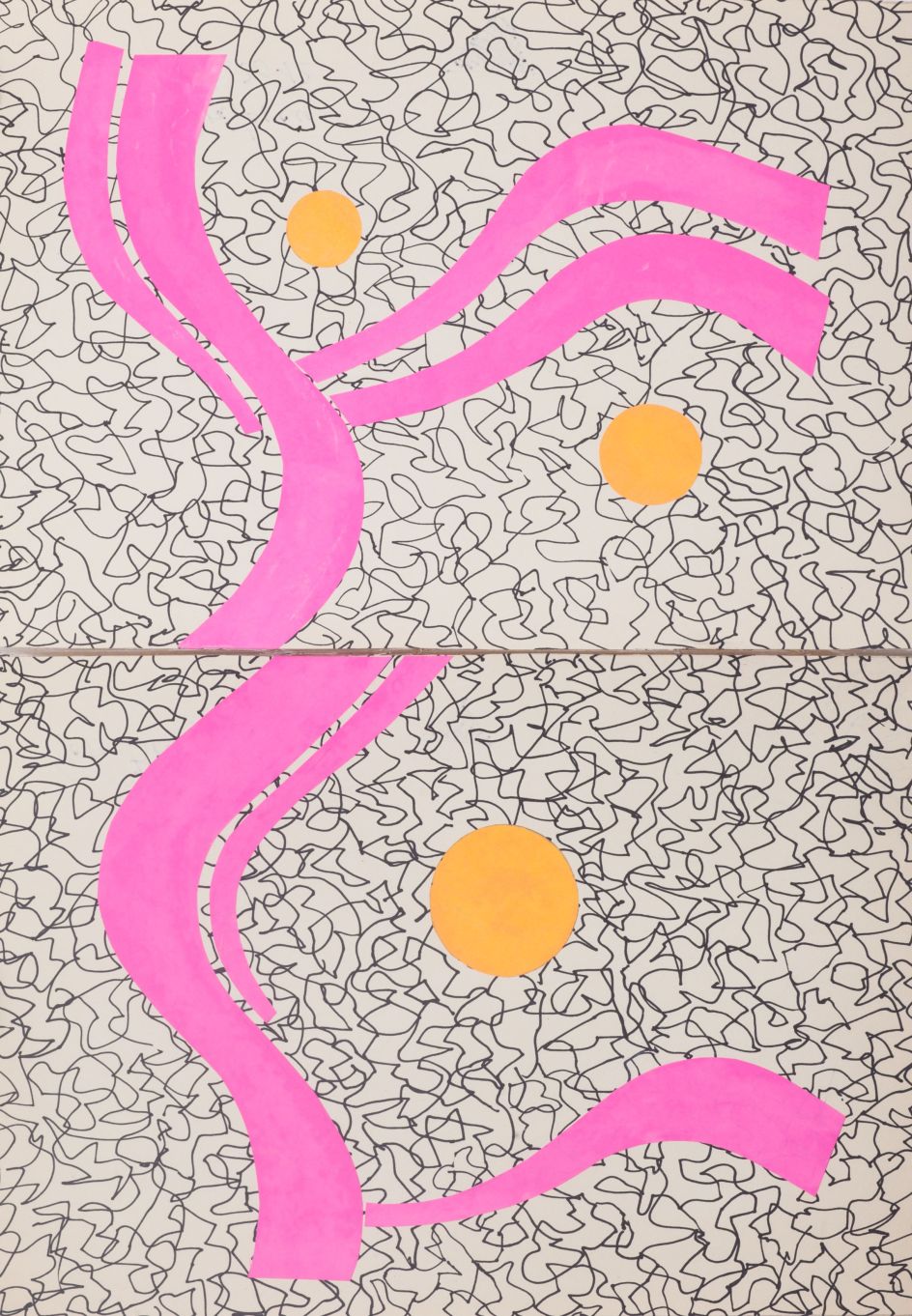
© Geta Brătescu Courtesy the artist, Ivan Gallery, Bucharest and Hauser & Wirth
By turns playful and purposeful, Brătescu’s inexhaustible creativity runs as a common thread throughout the exhibition and can be seen in the vibrant proliferation of ideas in the artist’s notebook ‘Carnet’ and 'Linia' (2014), a series of drawings on post-it notes. Brătescu’s experiments with colour and line are developed further in ‘Untitled (The Line – Game of Forms)’ (2013), an extraordinary 35-part work that combines abstract and representational elements, described by the artist as traces of her memories and experiences.
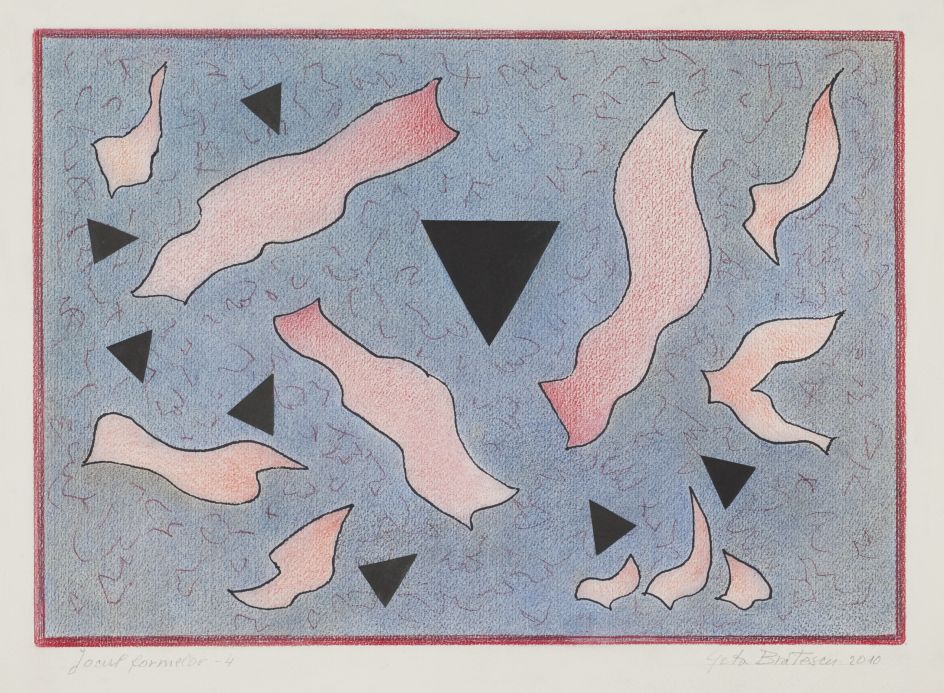
© Geta Brătescu Courtesy the artist, Ivan Gallery, Bucharest and Hauser & Wirth
Brătescu’s approach to materials evolved from an attitude towards her studio as both a physical and psychological space, a safe environment of enclosure as well as a stage for creative invention. Her freedom paradoxically emerged from this contained space of the studio: the freedom to be able to continue ‘drawing with scissors’ and exploring the new ideas that came to her every day.
These ideas were generated by the texture of the paper, for example, and by the simple, everyday materials and objects which surrounded her. She frequently used these lo-fi, inexpensive elements as a point of departure and an intimate aesthetic emerges in the works which incorporate torn paper, coffee sticks, and matchboxes, such as ‘Untitled (Fără titlu)’ (2013).
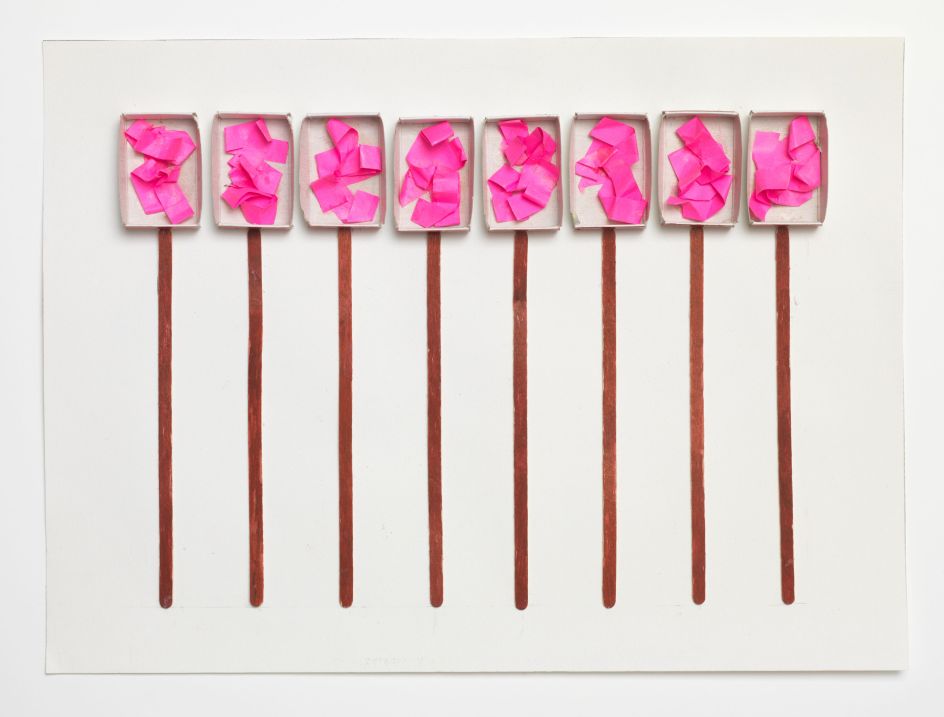
© Geta Brătescu Courtesy the artist, Ivan Gallery, Bucharest and Hauser & Wirth
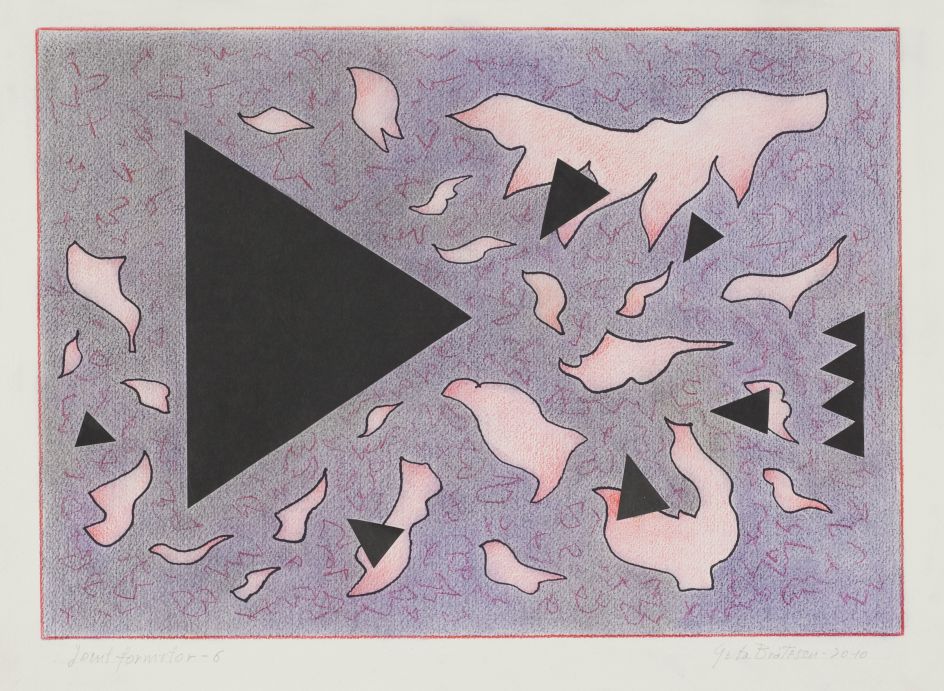
© Geta Brătescu Courtesy the artist, Ivan Gallery, Bucharest and Hauser & Wirth
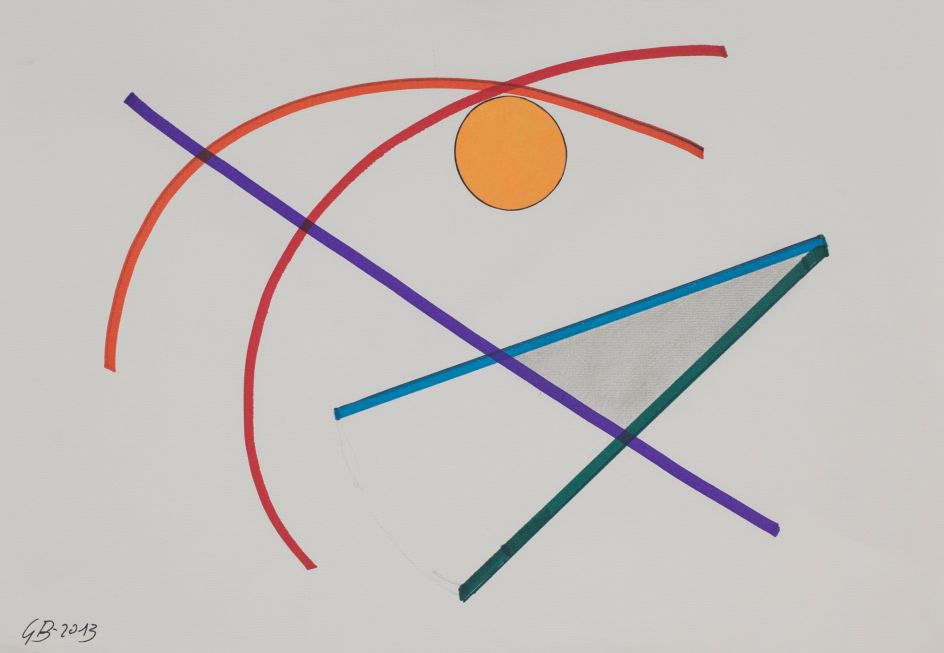
© Geta Brătescu Courtesy the artist, Ivan Gallery, Bucharest and Hauser & Wirth
The exhibition coincides with a book from Hauser & Wirth Publishers entitled ‘Geta Brătescu: Game of Forms’. This new publication features works from the series alongside excerpts from the artist’s diaries dating from 2008 to 2017.
Brătescu studied both art and literature, and the duality of writing and drawing was central to her thought process and practice. During her lifetime, Brătescu published a number of books documenting her daily studio activities and personal experiences. Jeu de Formes is the title, originally in French, that she gave to the cycle of works that was the focus of the last decade of her career, consisting of collages and line drawings.
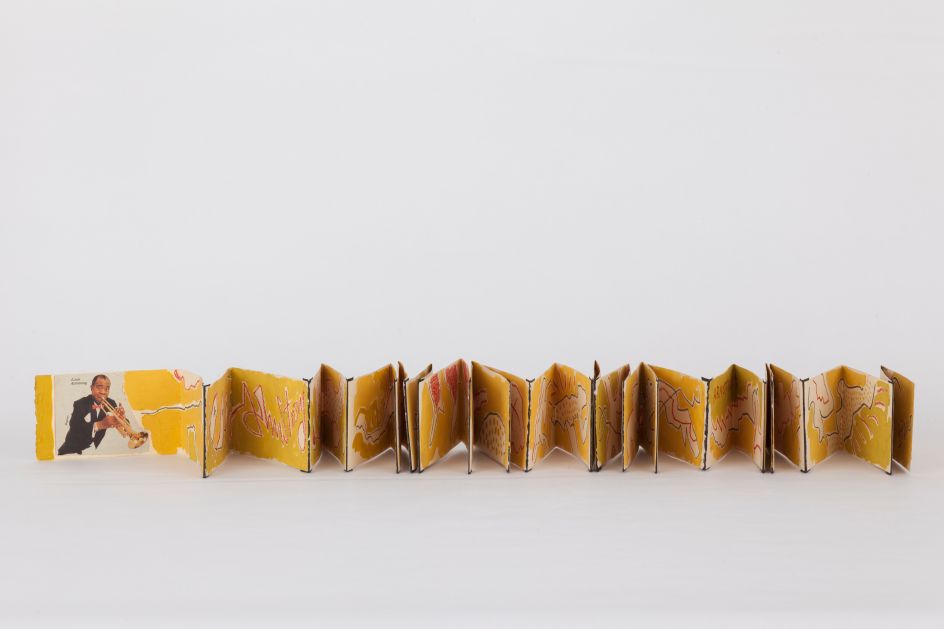
© Geta Brătescu Courtesy the artist, Ivan Gallery, Bucharest and Hauser & Wirth
Geta Brătescu. The Power of the Line will run from 27 February until 27 April 2019 at Hauser & Wirth London. Discover more at www.hauserwirth.com.




 by Tüpokompanii](https://www.creativeboom.com/upload/articles/58/58684538770fb5b428dc1882f7a732f153500153_732.jpg)


 using <a href="https://www.ohnotype.co/fonts/obviously" target="_blank">Obviously</a> by Oh No Type Co., Art Director, Brand & Creative—Spotify](https://www.creativeboom.com/upload/articles/6e/6ed31eddc26fa563f213fc76d6993dab9231ffe4_732.jpg)








